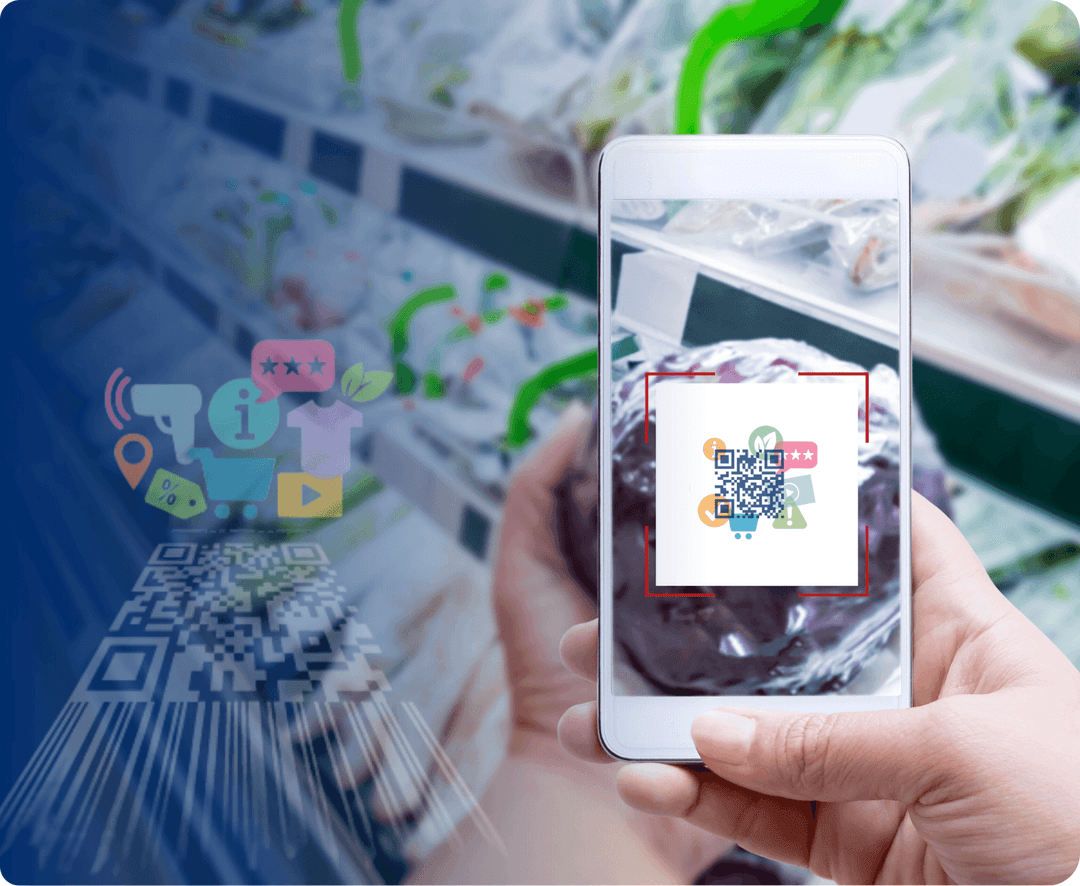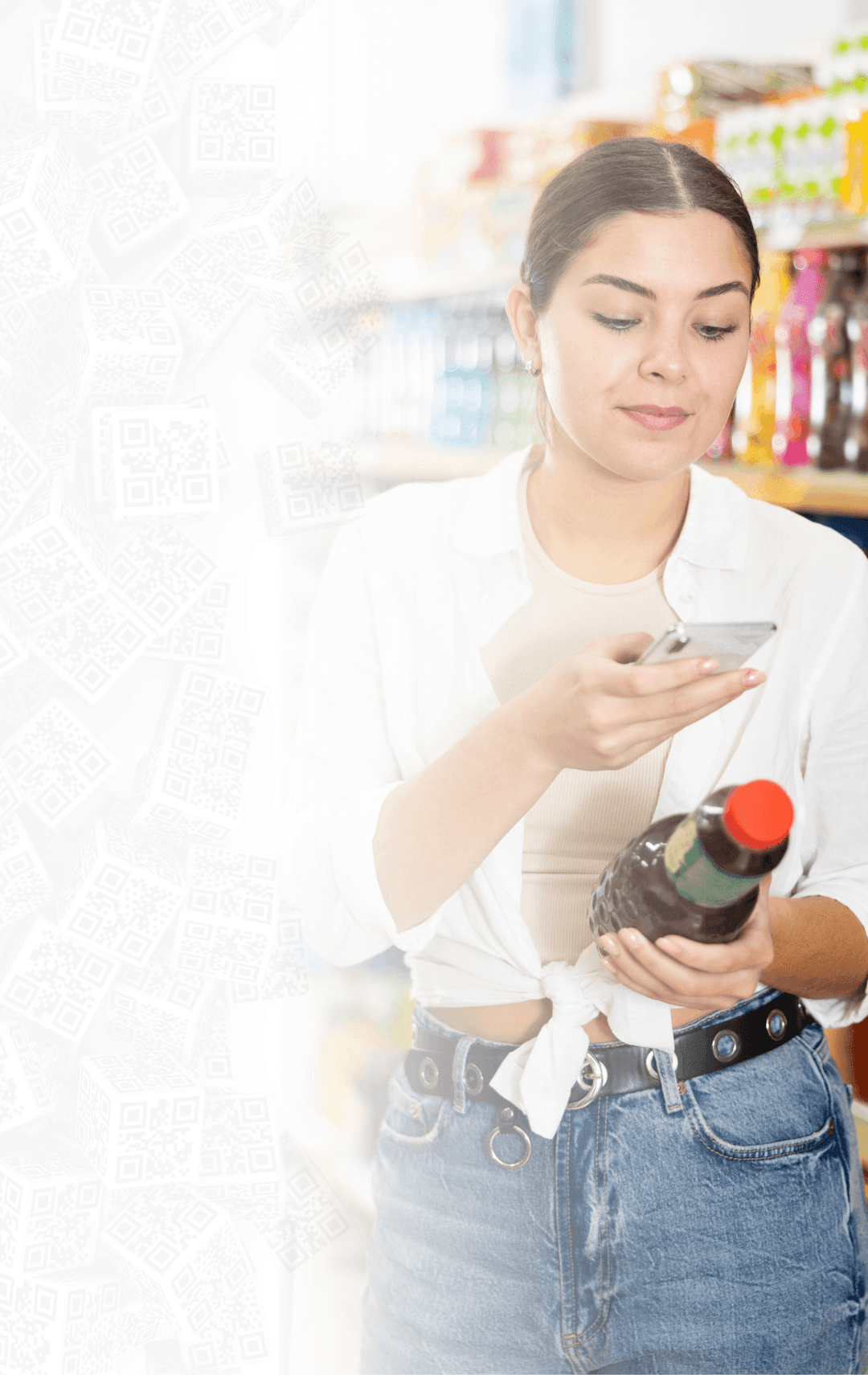

The 2D barcode has emerged as a powerful tool, changing how brands connect with consumers. From facilitating seamless access to product details to offering personalised experiences, these barcodes have transformed traditional marketing methods. This blog is about the significance of 2D barcodes in modern marketing strategies, exploring their evolution, benefits, and future potential.

2D barcodes, unlike traditional one-dimensional (1D) barcodes, are two-dimensional graphical images that store significantly more data. While 1D barcodes, such as UPCs or EANs, are limited to storing basic product information like the Global Trade Item Number (GTIN), 2D barcodes, including QR codes and Data Matrix codes, can store over 7,000 characters of information. This enhanced capacity makes 2D barcodes ideal for various applications across industries, ranging from marketing campaigns to product authentication.
In marketing, businesses use 2D barcodes to engage consumers by linking them to online content, product information, or promotions. Additionally, these barcodes can track consumer interactions, providing businesses with valuable data insights. They also play a vital role in supply chain management, offering improved traceability and transparency. With their advanced capabilities, 2D barcodes are a powerful tool for driving efficiency, enhancing customer engagement, and supporting business strategies.

2D barcodes have become integral in enhancing consumer experiences, offering quick and direct access to valuable information. Through a simple scan, consumers can instantly receive product details, reviews, tutorials, and even special offers. This level of accessibility has made interactions more transparent, fostering trust between brands and consumers. Additionally, these codes provide a gateway to immersive and personalised content, making marketing efforts more relevant and tailored to individual preferences.
Seamless Access to Information
2D barcodes enable instant access to detailed product information, including ingredients, reviews, usage instructions, URLs and much more. By bridging the gap between physical products and digital content, these codes enhance transparency, allowing consumers to make informed purchasing decisions.
Interactive and Engaging Content
Marketers leverage 2D barcodes to deliver multimedia content such as videos, Augmented Reality (AR) experiences, and gamified loyalty programs. Campaigns that incorporate these interactive elements often see higher engagement rates as they create memorable and immersive brand experiences.
Personalisation and Customisation
Personalised marketing is made more effective with 2D barcodes. Brands can use these codes to tailor offers, discounts, and messages based on consumer preferences and behaviours. Successful campaigns have shown how targeted content driven by barcode scans leads to increased customer satisfaction and brand loyalty.
For marketers, 2D barcodes offer an array of benefits, from data collection to enhancing customer engagement. Their versatility and efficiency make them a valuable tool for businesses looking to optimise marketing efforts and drive consumer interaction.
Enhanced Data Collection and Analytics
2D barcodes provide valuable insights into consumer behaviour. By tracking scans, marketers can analyse preferences, shopping patterns, and interaction frequencies, enabling more targeted campaigns and refined customer segmentation.
Cost-Effective and Versatile Marketing Tool
Implementing 2D barcodes is relatively inexpensive and easily adaptable to various marketing channels, from print ads to digital platforms. This flexibility allows businesses of all sizes to integrate these codes into their existing strategies with minimal investment.
Increased Consumer Engagement and Retention
Studies show that campaigns using 2D barcodes result in higher engagement rates. Whether used for offering discounts, promoting exclusive content, or enabling seamless checkouts, these barcodes are instrumental in building lasting relationships with customers.

Successfully incorporating 2D barcodes into a marketing strategy requires careful planning, design considerations, and a focus on user experience. Ensuring that barcodes are easy to scan and lead to optimised landing pages is crucial for driving engagement.
Best Practices for Effective Use
When using 2D barcodes, consider factors such as size, placement, and contrast for better visibility. Ensuring that landing pages are mobile-friendly and load quickly is essential for keeping consumers engaged post-scan.
Overcoming Common Challenges
Challenges like scanner compatibility and educating consumers about the benefits of scanning barcodes can hinder adoption. Addressing these concerns with clear instructions and ensuring security through encryption can help overcome potential hurdles.
As technology advances, barcode check is expected to evolve, integrating with emerging trends like augmented reality (AR) and smart packaging. These innovations promise even more interactive and data-rich consumer experiences.
Emerging Trends and Technologies
The integration of 2D barcodes with AR and IoT devices is on the rise. This convergence allows for richer interactions, such as virtual try-ons or real-time product tracking, enhancing the overall consumer experience.
Predictions for Market Growth
The role of 2D barcodes in marketing is projected to expand, driven by increased digitalisation and demand for personalised experiences. Industry reports predict continued growth in their usage across various sectors, making them a staple in future marketing strategies.
A 2D barcode is a graphical symbol that stores more data than a traditional 1D barcode. Common types include QR codes and Data Matrix codes, which are widely used in marketing, retail, and logistics.
No, while a QR code is a type of 2D barcode, not all 2D barcodes are QR codes. Other types include Data Matrix codes, with unique features and use cases in different industries.
2D barcodes are superior because they store more data, can encode diverse information like URLs or multimedia, and are scannable from any direction. Their versatility and ease of use make them more efficient for modern marketing and data management needs.
2D barcodes work by encoding data in a grid of black and white squares or dots. When scanned, this pattern is decoded into readable information, such as a URL, product details, or an image, providing instant access to the stored content.
In marketing, 2D barcodes are commonly used for sharing product information, delivering personalised offers, and enabling interactive content like AR experiences. They are also popular for tracking consumer behaviour and optimising inventory management in the retail sector.
2D barcodes enhance trust by offering transparent information about products, such as origin, ingredients, and safety certifications. Consumers can verify authenticity and access detailed product data, helping them make informed purchasing decisions.
Implementing 2D barcodes is cost-effective, with low setup and maintenance costs. They can be easily integrated into existing marketing channels, providing a high return on investment by improving engagement and operational efficiency.
The success of a 2D barcode campaign can be measured through metrics such as scan rates, conversion rates, and consumer engagement. Analytics tools can track these interactions, providing insights into campaign performance and areas for improvement.
Your email address will not be published. Required fields are marked *